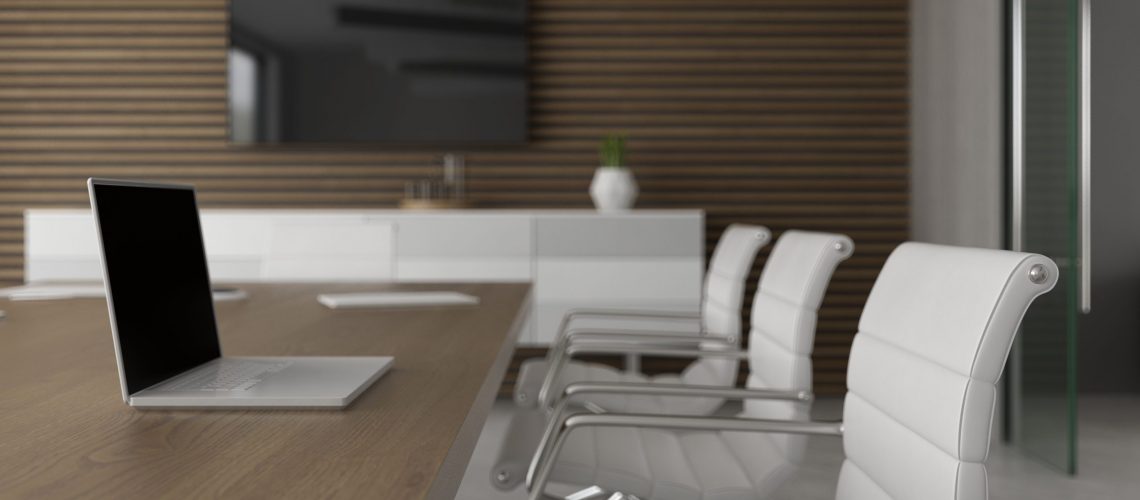The COVID-19 pandemic has changed the way we do just about everything, from eating at restaurants to gathering with friends. It also brought about some major changes to the way we do work, with many companies going fully remote for some if not all of 2020.
As the year comes to a close, most organizations are looking forward to 2021 and thinking about how to create sustainable and productive work models. Companies need models that will help them make up some of the ground that was lost in 2020 while still keeping employees healthy, happy and safe.
Meeting room technology will play a key role in getting business moving again in 2021. The right solutions can enable productive meetings and keep employees engaged no matter where they are working from. Keep reading to learn more about technology solutions that will take center stage in the new year.
Conference Audio Quality Takes Priority
Video capabilities for meeting rooms get a lot of attention but, for many companies, high quality meeting room audio that delivers clear, intelligible sound is a top priority for 2021.
Poor audio quality immediately affects the productivity of a meeting. You can still get things done if people can’t see each other, but you won’t accomplish anything if people can’t hear each other.
There are many factors that can affect the quality of your audio, including your microphones, speakers and other AV technologies, as well as the acoustics of your meeting rooms. Check out this blog for some ways to improve audio intelligibility.
Digital Video Walls Improve Information Sharing
To monitor, manage, and coordinate emergency efforts, many companies are deploying video walls and related digital technology to monitor, manage, and coordinate emergency efforts, and that trend is projected to grow in 2021.
Some organizations with Network Operations Centers (NOCs) and Emergency Operations Centers (EOCs) need rooms with access to 24/7 monitoring. Many of these organizations are monitoring their own digital security or analyzing their digital PR on social media. Regardless of the content being viewed, video walls will be increasingly deployed to display the critical information companies need to see.
In-Room Workflow and Technology Support Hybrid Work
The hybrid workplace will become the norm in 2021 and it requires technology that allows employees to easily get in touch with each other, quickly find and book meeting rooms, and measure and keep track of room utilization whether they are located in the office or working from home..
There are many technology solutions—including digital personal assistants—that can make coming back to the office easy and safe. Ultimately, your meeting room technology should increase productivity, eliminate technical support calls, and deliver a consistent experience. Here are some options to consider:
- Sensor-based automation. In the perfect meeting space, you could just walk into the room and your technology would take care of the rest, including turning on the lights, adjusting the window shades, and turning on the room display.
- Occupancy sensors can make that dream a reality. For example, sensors that are integrated with your lighting system can trigger your meeting room lights to turn on—and stay on—while you are in the meeting room. They can also be set to turn the lights off once there is no motion in the room for a certain amount of time. Without the lights on all day and night, your organization can save money and increase energy efficiency.
- Automated environmental controls can also help optimize the health and productivity of your employees. Easily manage your energy usage and create a comfortable work environment by integrating your lighting control with your HVAC system to balance the room temperature and lighting.
- Touchless Meeting Rooms. The COVID-19 pandemic re-shaped the way we interact with our physical spaces. Every touchpoint leading up to and in the meeting room has to be considered. Key components for a touchless meeting room include occupancy sensors, voice controls, wireless presentation technology that connects to personal devices, and facial recognition.
- Collaboration Platforms. The modern hybrid workforce still needs to connect and collaborate and employees want the same experience whether they are in the office or working from home. Collaboration software enables employees to stay connected and get work done no matter where they are. Your collaboration solutions can include everything from project management tools like Asana and Trello to message and chat tools like Slack and Flock.
Today’s hybrid workforce has embraced audio and video conferencing for collaborative and productive meetings. Some top video conferencing software solutions include Zoom, Microsoft Teams, and Google Meet.
How We Can Help Your Meeting Rooms
At AV Solutions, we believe technology should simplify our lives, instead of giving us more to do and worry about. We are committed to helping you solve the most challenging audiovisual and conferencing problems that happen in your meeting rooms. Ready to get started? Call us today.
